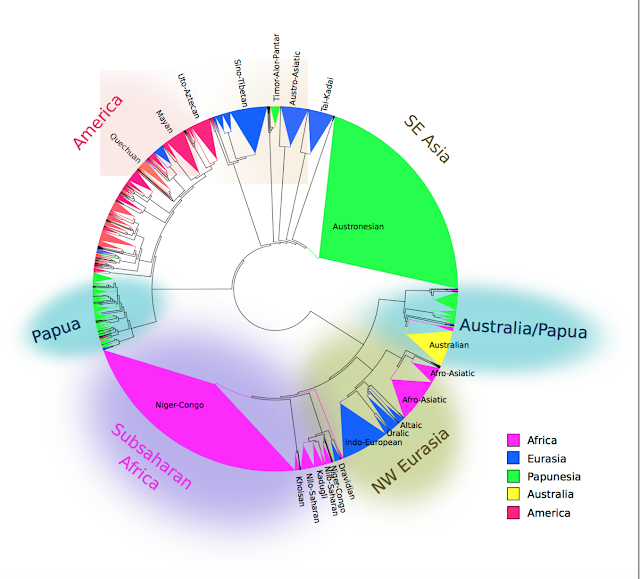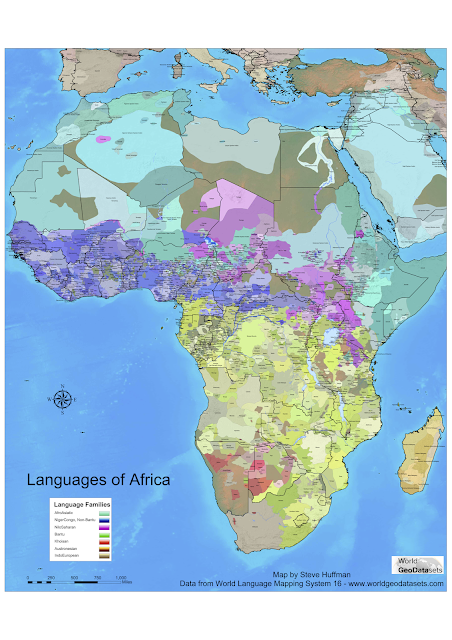Registers and styles
In Samoan (Oceanic, Austronesian) there are two styles: T-language or 'o le tautala lelei (the good language) and K-language or 'o le tautala leaga (the bad language). Styles refer to inter-language variation that is not dialectal (bound to geography), but rather changes depending on the factors such as formality and intimacy of the context.
These two are quite interesting since they are marked by a switch of [t] to [k], [r] to [l] and [n] to [ŋ], among other markers. There is a PhD dissertation on this from 2001 (Mayer), in which we can find this quote that very clearly explains what "styles" are. I like it and I want to share it with you.
Because the Samoans almost always use K's instead o f T's, a few elders have been inclined to remark, "Why should we be so careful about using T’s? Why shouldn’t we speak the language the same as the Samoans do?’’ The most common reply is that anyone with a true love for languages will adhere to its pure form and avoid this corruption. But much more important than this is the fact that there is a standard of appropriateness that is expected o f missionaries. Even in English, whether you realize it or not, you change your way of speaking to fit the situation. You hail your friends with something like "Hiya Gang!" To a good friend of your father's you say "Hi. Mr. Smith." Your bishop gets a "Good morning, Bishop Olson." Why not "Hiya Oley!" to your bishop? Why not "Good morning, Gang!" to your friends? The answer is that you use the kind o f language appropriate for each situation. In Samoa there is a standard expected of all ministers, whether they be L.D.S. or Methodist, American or Samoan. A missionary will lose the respect of the people if he speaks in K's.
This is advice on the Samoan language to missionaries of the Church of Jesus Christ of Latter-Day Saints from Johnson and Harmon (1972) as cited in Mayer (2001).
Alongside "style" there is also the term "register", as Mayer writes (1972:18-19)
A register may be said to be situation-specific and is concerned with the aim of the communication. It consists of structural and linguistic features that set it apart from other registers within the speech community. Style, as distinct from register, refers to varieties of speech which focus on the relationships between the participants.
[...]
Style has been defined as a variety of language with shared features among its speakers that are used to express dimensions such as intimacy/distance, casualness/formality, and peremptoriness/politeness. On the other hand, register has been defined as a variety of language with shared features among its speakers that are used in specific situations and for specific functions. For both style and register, these features may include vocabulary, syntactic patterns, prosodic features, and phonology. Genre is concerned with form and is often structured by extralinguistic rules that are concerned with external format. That these subcategories of language variation occur on a continuum rather than in highly defined and discrete forms has contributed to the difficulty in distinguishing between them.
So, there are a difference between register and style and yet they will often be hard to tease apart.
References
Johnson, A. P., and L. E. Harmon. 1972. Let’s speak Samoan. Apia: Church of Jesus Christ of the Latter-Day Saints Press.
Mayer, J. F. (2001) Code-switching in Samoan: T-style and K-style. PhD dissertation: University of Hawai'i
These two are quite interesting since they are marked by a switch of [t] to [k], [r] to [l] and [n] to [ŋ], among other markers. There is a PhD dissertation on this from 2001 (Mayer), in which we can find this quote that very clearly explains what "styles" are. I like it and I want to share it with you.
Because the Samoans almost always use K's instead o f T's, a few elders have been inclined to remark, "Why should we be so careful about using T’s? Why shouldn’t we speak the language the same as the Samoans do?’’ The most common reply is that anyone with a true love for languages will adhere to its pure form and avoid this corruption. But much more important than this is the fact that there is a standard of appropriateness that is expected o f missionaries. Even in English, whether you realize it or not, you change your way of speaking to fit the situation. You hail your friends with something like "Hiya Gang!" To a good friend of your father's you say "Hi. Mr. Smith." Your bishop gets a "Good morning, Bishop Olson." Why not "Hiya Oley!" to your bishop? Why not "Good morning, Gang!" to your friends? The answer is that you use the kind o f language appropriate for each situation. In Samoa there is a standard expected of all ministers, whether they be L.D.S. or Methodist, American or Samoan. A missionary will lose the respect of the people if he speaks in K's.
This is advice on the Samoan language to missionaries of the Church of Jesus Christ of Latter-Day Saints from Johnson and Harmon (1972) as cited in Mayer (2001).
Alongside "style" there is also the term "register", as Mayer writes (1972:18-19)
A register may be said to be situation-specific and is concerned with the aim of the communication. It consists of structural and linguistic features that set it apart from other registers within the speech community. Style, as distinct from register, refers to varieties of speech which focus on the relationships between the participants.
[...]
Style has been defined as a variety of language with shared features among its speakers that are used to express dimensions such as intimacy/distance, casualness/formality, and peremptoriness/politeness. On the other hand, register has been defined as a variety of language with shared features among its speakers that are used in specific situations and for specific functions. For both style and register, these features may include vocabulary, syntactic patterns, prosodic features, and phonology. Genre is concerned with form and is often structured by extralinguistic rules that are concerned with external format. That these subcategories of language variation occur on a continuum rather than in highly defined and discrete forms has contributed to the difficulty in distinguishing between them.
So, there are a difference between register and style and yet they will often be hard to tease apart.
References
Johnson, A. P., and L. E. Harmon. 1972. Let’s speak Samoan. Apia: Church of Jesus Christ of the Latter-Day Saints Press.
Mayer, J. F. (2001) Code-switching in Samoan: T-style and K-style. PhD dissertation: University of Hawai'i



Comments
Post a Comment